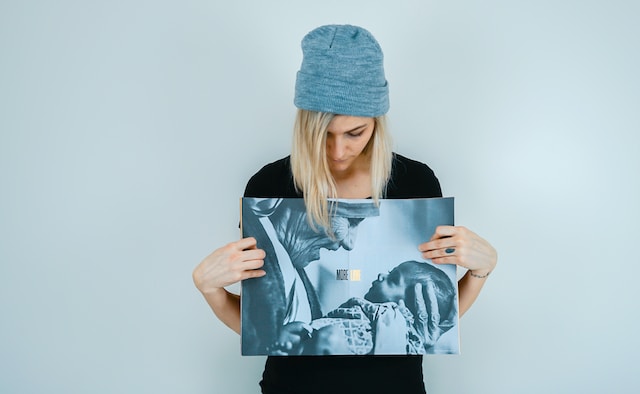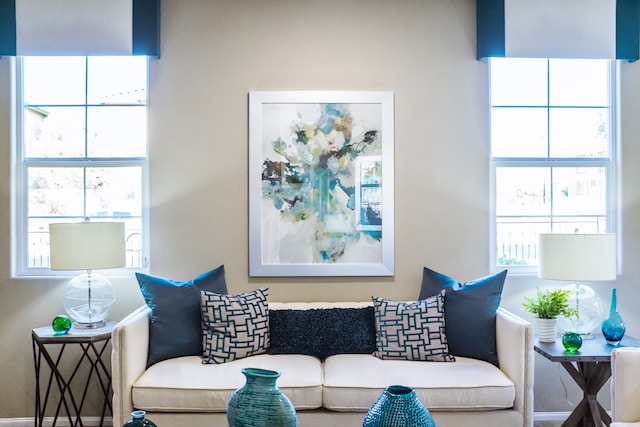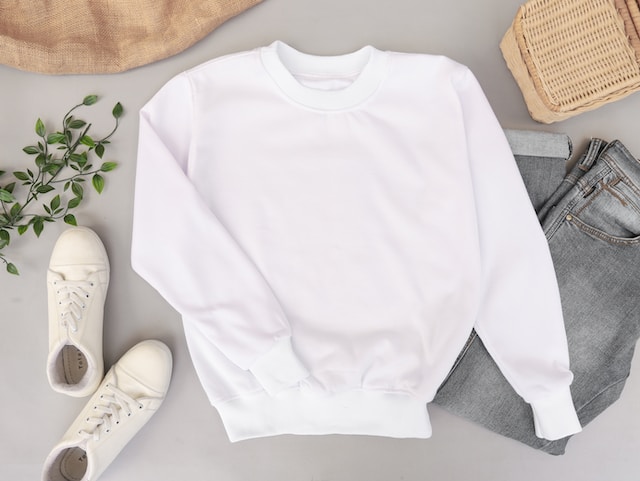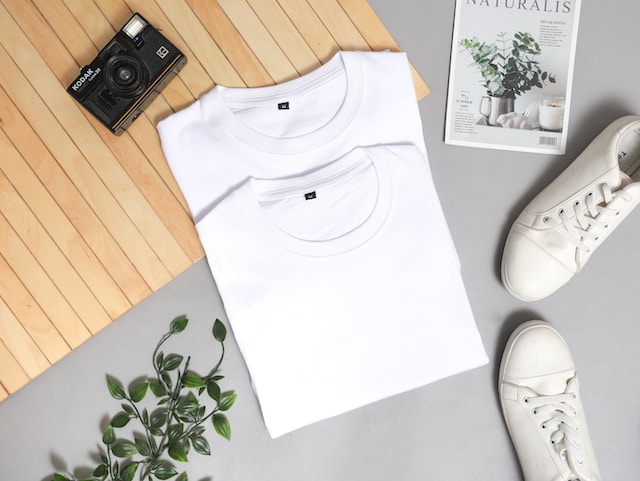POD is popular!! A business model where products, such as apparel, accessories, or home decor, are produced only when an order is received. This eliminates the need for inventory management and upfront costs. It involves working with a print provider to customize white-label products. You then sell these products pre-ordered under your label or brand.
For today’s article, we will try to explore the concept of POD and its benefits for businesses and consumers, let’s get started!!
Print-on-demand (POD) is a business model or service that allows individuals or businesses to have products custom-printed and produced only when there is a demand for them. This approach eliminates the need for large upfront production costs and the need to hold inventory.
In the context of e-commerce, print-on-demand typically refers to the production of customized or personalized products, such as t-shirts, hoodies, mugs, phone cases, and more. Instead of pre-printing and stockpiling these items, the products are only created and printed after an order is placed.
Here's a simplified overview of how print-on-demand works:
Design Creation: A designer or an individual creates or uploads their design or artwork onto a print-on-demand platform. This can be a unique design, a logo, a graphic, or visually appealing artwork.
Product Selection: The designer or individual selects the type of product they want to offer with their design, such as t-shirts, hoodies, posters, or phone cases. The print-on-demand platform typically offers a range of products to choose from.
Online Store Setup: The designer sets up an online store or a listing on a print-on-demand marketplace. The design, product options, pricing, and product descriptions are added to the store or listing.
Customer Order Placement: A customer visits the online store or marketplace, sees the available products with unique designs and places an order for the specific item they want.
Printing and Fulfillment: Once an order is placed, the print-on-demand provider is notified. They then print the design onto the chosen product using a digital printing method. After printing, the product is packaged and shipped directly to the customer.

A. Cost-effectiveness and reduced risk of inventory management
B. Greater flexibility in product offerings and customization options
C. Minimal upfront investment and scalability
If an activity is cost-effective, it is good value for the amount of money paid: It wouldn't be cost-effective to buy an expensive new computer when all you want to do is store your photos. Inventory risks can include theft, damage, spoilage, obsolescence, overstocking, understocking, and inaccurate forecasting.
Product flexibility can be defined as the amount of responsiveness (or adaptability) for any future change in a product design, including new products and derivatives of existing products. A flexible design will reduce redesign costs and allow quicker response to customers with increased performance.
The minimum investment is the specified smallest amount of capital that is required to buy into or invest in a security, asset, or opportunity. Mutual funds and hedge funds typically have minimum investments, although these can vary drastically from hundreds or thousands of dollars right up to the millions.
A. Access to a wide range of unique and customized products
B. Quick turnaround time for product production and shipping
C. Higher quality and sustainability due to on-demand production
Customized products are unique and built to order. Typically these products have a large number of variants, such as furniture with different materials and colors, and jewelry with different settings and stones. Or they may be personalized, like t-shirts with printed logos and picture frames with a name engraved.
In many cases, the amount of time it takes to complete represents real dollars and can present risk. Fast turnaround time means less money spent on the workforce. If you can achieve shorter turnaround times without compromising quality, then you should try to do so.
Also known as manufacturing on-demand, custom manufacturing, or cloud manufacturing, on-demand manufacturing is a manufacturing system in which products are only manufactured when needed and in quantities required.

In print-on-demand, the emphasis is on the “on-demand” part – the printer will only print the product once it's ordered. This means you don't have to gamble with your money – you won't end up with a huge stock of t-shirts with a design that doesn't sell as well as you'd hoped.
The global print-on-demand market size accounted for USD 6.34 billion in 2022, and it is projected to be worth around USD 67.59 billion by 2032, growing at a CAGR of 26.71% over the forecast period from 2023 to 2032.
Apparel is a general name for various types of clothing. They are an apparel retailer that offers clothing, shoes, and accessories for men, women, and children. An accessory is an object or device that is not essential in itself but adds to the beauty, convenience, or effectiveness of something else. While Home Décor – short for home decoration, interior décor encompasses items and you guessed it, decorations, that make your home look nice. This can include a range of items such as furniture, art, plants, and accessories.
The four primary types of mass customization are collaborative customization, adaptive customization, transparent customization, and cosmetic customization. A custom or customized design is something built to a specific order.
A fitting example of custom design is a 'custom-made wedding gown' where the dress is created as directed by the bride-to-be. The client usually gives directions or asks the designer for their suggestion to create something unique.
Some popular print-on-demand products include:
Hats: Print-on-demand services also offer customization options for hats. Customized hats can be a great way to showcase personal style, promote a brand or event, or create unique merchandise.
T-shirts: Customizable t-shirts are one of the most sought-after products in the print-on-demand industry. They come in various styles, sizes, and colors, making them versatile and appealing to a wide audience.
Hoodies and Sweatshirts: These cozy and fashionable garments are popular choices for custom printing. They offer a larger canvas for designs and are particularly popular during colder seasons.
Posters and Wall Art: Print-on-demand allows artists, photographers, and designers to create and sell high-quality prints of their artwork. These can be in the form of posters, canvas prints, framed prints, or other wall art.
Mugs: Customized mugs are a favorite among coffee and tea lovers. They can feature personalized designs, quotes, or images, making them great for gifts or promotional items.

Phone Cases: With the endless variety of smartphone models, custom phone cases have become a popular print-on-demand product. People can showcase their unique style and protect their devices with personalized designs.
Home Decor Items: Products like throw pillows, blankets, tapestries, and shower curtains can be customized with unique designs, allowing individuals to add a personal touch to their living spaces.
Bags and Tote Bags: Customizable bags, including tote bags, backpacks, and duffle bags, offer practicality and style. They can feature logos, artwork, or slogans, making them ideal for branding or personal expression.
Stationery and Paper Goods: Customized notebooks, greeting cards, stickers, and calendars are popular print-on-demand products. They can be personalized with designs, names, or messages, making them great for gifts or personal use.
These are just a few examples of popular print-on-demand products. The versatility and range of customizable items continue to expand, allowing individuals and businesses to unleash their creativity and cater to various customer preferences.
A. Researching and selecting a reliable POD platform or service provider
B. Understanding the target audience and market demand for specific products
C. Importance of quality control and choosing reputable suppliers
D. Marketing and branding strategies to stand out in a competitive market
Plus with print-on-demand services, everything after the sale, from digital printing to order fulfillment and shipping, is handled by your supplier. A major additional benefit of print-on-demand is. that once you've set everything up, it takes only a few clicks to fulfill an order after you've made a sale. Printful, Gooten, Society6, Gelato, Teelaunch, and other popular providers.
A target market is the set of consumers that a company plans to sell to or reach with marketing activities. A target audience is a group or segment within that target market that is being served advertisements. This makes the target audience a more specific subset of a target market.
Quality control is important to safeguard the company's reputation, prevent products from being unreliable, and increase trust on the side of consumers. It ensures that the company looks at evidence-based data and research rather than anecdotal observations to ensure that the services/products live up to the standards.
A brand marketing strategy is a long-term plan whose purpose is to increase a brand's position and positive perception in the market. The strategy can include several media channels, campaign types, and a variety of tactics to reach its goals.

A. Sharing examples of successful businesses that have thrived using the print-on-demand model
B. Discussing the strategies and unique approaches that contributed to their success
Print-on-demand (POD for short) is an order fulfillment method where you design products and your POD partner company prints and ships the goods to your customers on your behalf. This is a white-label approach, meaning that there's no mention of your partner on the product or packaging—all the credit goes to you.
What are the 3 strategies for success?
Know Exactly How Far You Have Left to Go — Monitor your progress. Get Specific — Have a crystal-clear idea of exactly what success will look like. Seize the Moment to Act on Your Goals — Know in advance what you will do, and when and where you will do it.
A. Addressing potential challenges faced by businesses, such as maintaining quality control and managing customer expectations
B. Discussing the limitations of print on demand when it comes to certain product categories or complex designs
Key Takeaways. Quality control (QC) is a process through which a business seeks to ensure that product quality is maintained or improved. Quality control involves testing units and determining if they are within the specifications for the final product.
What is the disadvantage of print-on-demand?
Well, you have less control over the quality of the products. Even if you verify the quality of their products for your first order, if your POD supplier changes who they order from, the quality could change overnight. You are dependent on your printing partner for product availability.

What is the future of print-on-demand business? According to the research Print On Demand Market Size in 2022, the global market of this industry was valued at $6.18 billion. From 2023 to 2030, the market will witness a CAGR of 25.8%. This rate is promising, making it a worthy and profitable market to join. However, that bright future isn't the whole picture.
In the broadest sense, sustainability refers to the ability to maintain or support a process continuously over time. In business and policy contexts, sustainability seeks to prevent the depletion of natural or physical resources, so that they will remain available for the long term.
In conclusion, making a profit from a new print-on-demand store is possible. The keys to success are choosing the right niche, creating high-quality designs, choosing the best POD companies, and launching effective marketing strategies.
“Creativity is seeing what everyone else has seen, and thinking what no one else has thought.” The term 'creative industries' describes businesses with creativity at their heart – for example design, music, publishing, architecture, film and video, crafts, visual arts, fashion, TV and radio, advertising, literature, computer games, and the performing arts. As a result of that, exploring the possibilities and creative potential of the POD industry matters a lot to everyone.
That’s all for today, hope you have learned enough knowledge from it, and any questions, please comment below and let us know!!